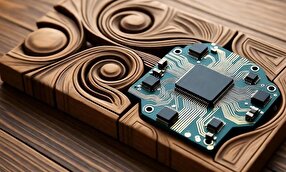10-Second Algorithm Can Unlock Fusion Energy

Unlike traditional methods, it rapidly predicts magnet complexity, saving time and effort. By integrating engineering constraints early, QUADCOIL helps streamline the path to cost-effective fusion energy, the journal Nuclear Fusion reported.
Just as engineers fine-tune Formula One race cars for peak performance, scientists aim to create high-performance plasmas in complex fusion devices called stellarators. For these plasmas to function effectively, they must retain heat and remain confined within precisely shaped magnetic fields.
To simplify this process, physicists have developed a new computer code that accelerates the design of the intricate magnets that shape the plasma. This innovation could make stellarators easier and more cost-effective to build.
The code, called QUADCOIL, helps scientists eliminate plasma shapes that, while stable, require impractically complex magnets. By identifying these early, researchers can focus on designing stellarators that balance both physics and manufacturability.
“QUADCOIL predicts the complexity of the magnets quickly, helping you avoid the plasma shapes that are great physics-wise but not helpful for actually building a fusion facility,” said Frank Fu, a graduate student in the Princeton Program in Plasma Physics, based at the U.S. Department of Energy’s (DOE) Princeton Plasma Physics Laboratory (PPPL), and lead author of a paper outlining the code. This research pairs PPPL’s expertise in sophisticated plasma computer codes with its extensive history of developing stellarators, a concept that the Lab originated 70 years ago.
Once scientists have chosen a plasma shape with a particular set of properties that can foster fusion reactions, QUADCOIL efficiently performs rough calculations to determine the magnet shapes that could create a plasma with those properties. If the shapes are too complicated, the code allows scientists to redesign the plasma shape. This process leads to a balance of physics and engineering that would take far longer using other codes. In fact, while traditional magnet-design programs can evaluate magnet shapes in 20 minutes to several hours, QUADCOIL can complete the task in 10 seconds.
Traditional programs typically have two stages: one computer program determines a plasma shape with the required properties and another determines magnet shapes that can produce those properties, with little communication between the two. A newer type of program makes both calculations simultaneously, but because the task is harder, the program takes longer to run and can lead to magnet designs that are too complex to build or create a plasma that does not perform as intended.
“Think of two teams building a car engine: one that designs the engine and another that builds it,” Fu said. “QUADCOIL, in a sense, moves one person from the build team to the design team to keep an eye on how the design might affect the final product. The estimate will be rougher than what you would get if you actually built the car and added up the expenses, but the process is faster and leads to specifications that are sensible.”
QUADCOIL also allows scientists to add a range of engineering specifications to the inputs, generating magnet shapes that are more relevant to the scientists’ needs. Those specifications can include information about magnet materials and shapes, or topologies. Moreover, QUADCOIL can generate data about properties that other codes cannot, including the magnets’ curvature and how much magnetic force they experience. “In short, QUADCOIL has three innovations: it calculates more quickly, predicts more properties than other codes can and is flexible,” Fu said.
This research shows how sophisticated computer programs are critical to developing stellarator fusion facilities. “One of the major challenges in designing stellarators is that the magnets can have complex shapes that are hard to build,” said Elizabeth Paul, an assistant professor of applied physics and applied mathematics at Columbia University and one of the paper’s co-authors. “This problem tells us that we need to be thinking about magnet complexity at the very beginning. If we can use computer codes to find plasma shapes that both have the physics properties we want and can be formed using magnets with simple shapes, we can make fusion energy more cheaply.”
Fu and other research team members are now developing a version of QUADCOIL that not only determines how easy a particular set of magnets is to build but also tells the researcher how to improve the plasma shape. While the current prototype code can run on a laptop computer, the final version will most likely require a computer with more powerful graphical processing units. Fu also plans to integrate a future version of QUADCOIL into larger software suites for stellarator design. “Developing a stellarator requires a lot of computation,” Fu said. “I’m trying to make the design process as smooth as possible.”
4155/v





















